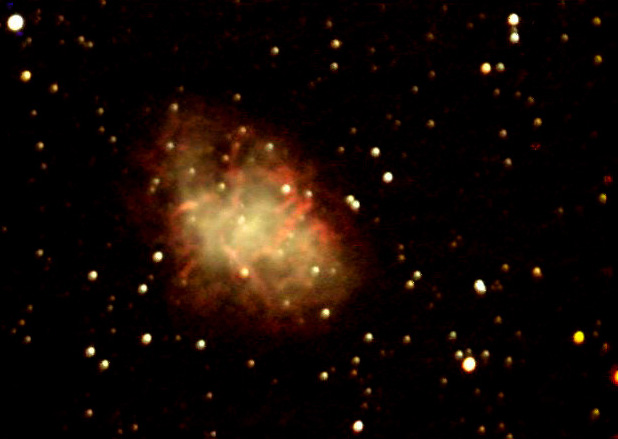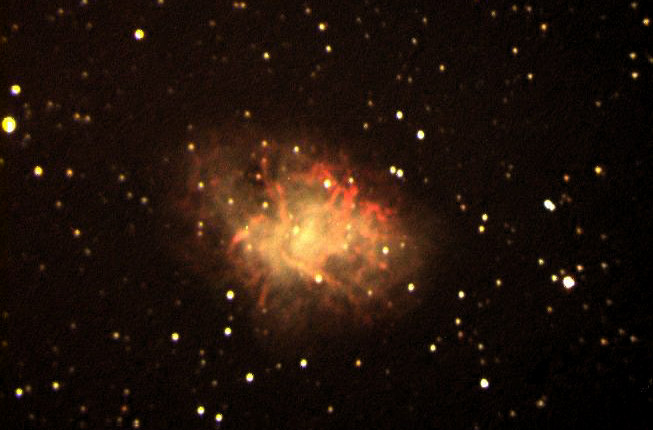M1
The Crab Nebula is perhaps the most famous of the Messier objects, and is certainly the best known supernova remnant. This object is a huge expanding cloud of debris blasted into space by a star that exploded about 7,250 years ago. It was seen by many ancient astronomers in the year 1054 A.D. and reported to be about 4 times the brightness of Venus. This would allow it to have been seen in broad daylight. Observations of M1 by Charles Messier on August 28, 1758, influenced him to begin creation of his famous catalog. The nebula was named The Crab during the middle of the 19 th century, after publication of a drawing by Lord Rosse, but its true nature was not discovered for almost 100 years thereafter. The fact that the object was expanding in size was discovered in 1921, and it now fills a volume of space about 10 light-years in diameter. The expansion is proceeding at the rate of 1200 miles per second. The unusual color of the nebula stems from synchrotron radiation, created when high-energy electrons encounter a strong magnetic field. In 1949, strong radio emissions were detected from the Crab and in 1963, it was found to be a source of X-rays. In 1968, a millisecond pulsar was found in the Crab and it is now clear that this object is the collapsed core of the progenitor star. The pulsar is a neutron star about 20 miles in diameter, rotating 30 times each second.
 |
| Image taken January 24, 2012, with the C-14 operating at F:7 and the ST-8 binned 2 X 2 Exposure is 30 minutes through each filter. |
 |
| Taken October 2, 2005, with the 402 camera on the C-14 operating at F:3.5 with the focal reducer. Exposure is 10 minutes through each filter and color combine was done with Maxim DL. |